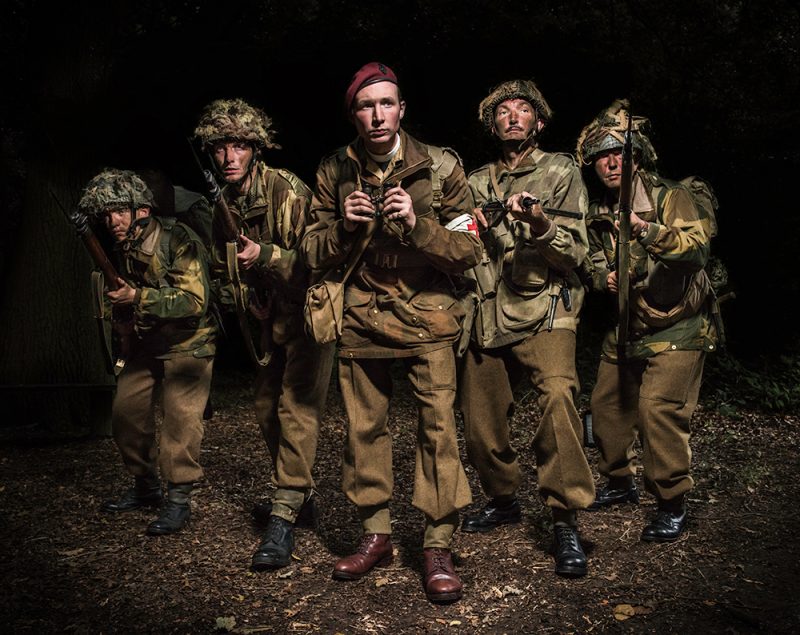Early in the movie, in the scene when the generals are having a meeting, they have a map of Europe and Middle East from the Cold War era.
When speaking about World War II-themed movies, A Bridge Too Far is and will stay one of the best there is. Even though it had limited success when it first appeared, the movie eventually became considered an epic. However, since nothing is perfect, even epic movies have mistakes that couldn’t slip past the keen eyes of history enthusiasts.
Based on Cornelius Ryan’s book with the same title, the movie portrays one of the most famous operations of the late stage of WWII: Market Garden. In September 1944, the Allies tried to capture the towns of Eindhoven, Nijmegen and Arnhem as well as nine bridges in their vicinity. If the operation had been successful, the Allies would have had an open road to Germany. However, they failed to do so and the operation ended up as a fiasco.
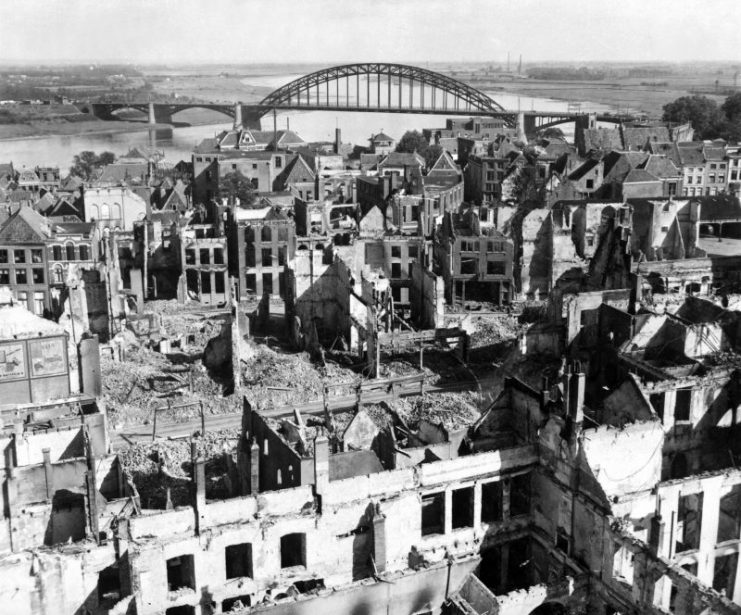
Regarding the course of historical events during the operation, A Bridge Too Far is as accurate as one movie can be. Not only because it presented events the way they happened, but because it also depicted the bad relations between officers and other reasons that contributed to the operation ending up as a failure. To make it even more authentic, the movie was filmed at the actual scenes of the operation in the Netherlands.
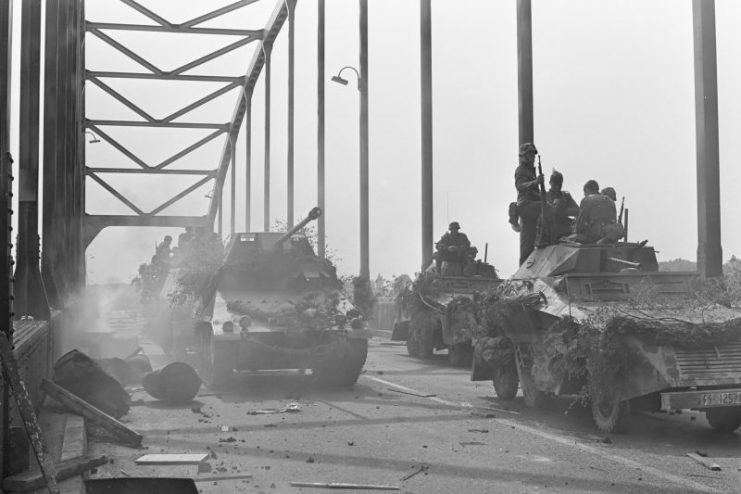
The only thing that the movie makers omitted was to fully show the role and the guilt of Field Marshal Bernard Montgomery. It is believed that British director Richard Attenborough had too much respect for Montgomery to portray him in a bad manner.
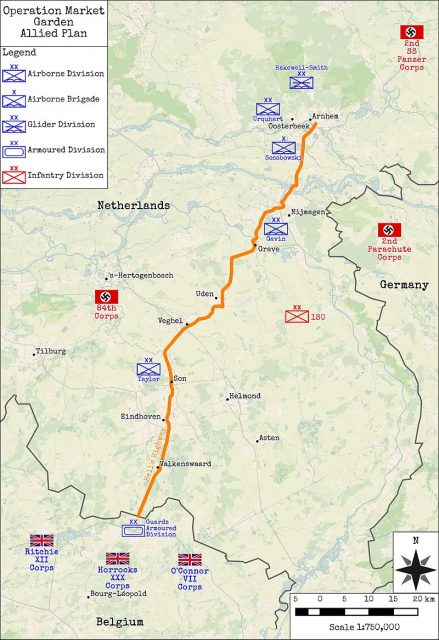
Even from the strictly entertainment perspective, A Bridge Too Far was top of the tops. The cast included stars such as Anthony Hopkins, Sean Connery, Gene Hackman, Dirk Bogarde, Michael Caine, James Caan, Ryan O’Neill, Robert Redford and even Laurence Olivier.
Filmed in 1977, A Bridge Too Far is an old school war movie. It may not have scenes with high-detail explosions and particles flying in front of your face. However, if you want to see hundreds of parachutists jumping from planes, as if you’re watching a live military exercise, then this is a movie for you.
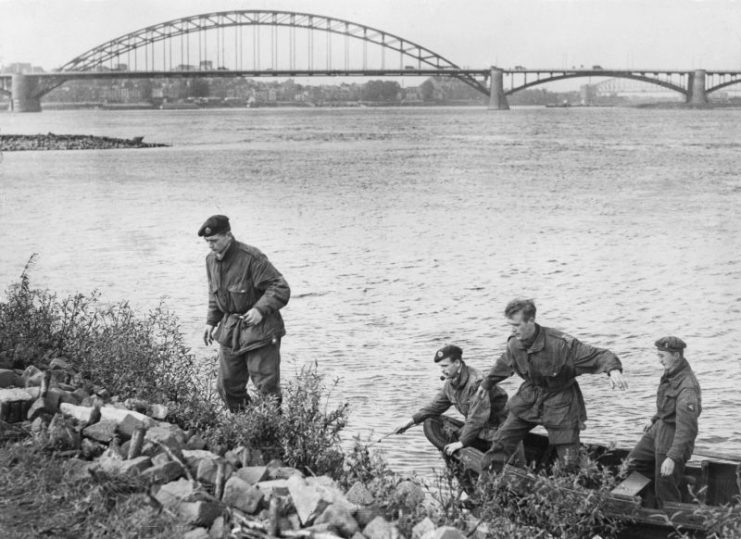
For a movie three hours long, with such complex organization, mistakes were inevitable. A Bridge Too Far had a handful of them. There are faults regarding weapons and equipment which are typical, but there are also historical faults and anachronisms. None of these, however, are egregious enough to diminish the value of the movie.
Equipment and uniforms
In the first scenes of the airborne assault, XP type parachutes are being used. These were introduced in the 1960’s, so there was no chance that they could have been used during WWII. The producers had to use what they had at the time, and hardly anyone was able to find the necessary numbers of X type parachutes that were used in 1944.
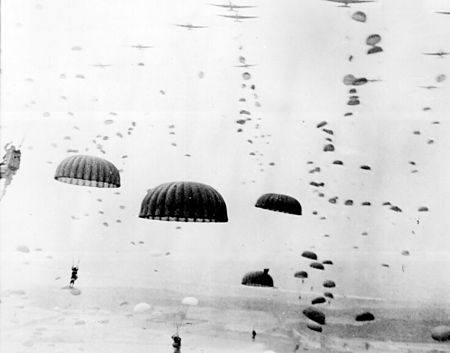
The same is the case with boots, which could be seen in some close-up scenes. Soldiers in the movie are wearing DMS boots, which were issued at the same time as XP type parachutes, if not later.
Much bigger mistakes were made with the uniforms of the Waffen SS soldiers. Throughout the entire movie they are wearing model 1936 field-gray blouses instead of camouflage pattern jackets. By autumn 1944, most SS soldiers wore these.
The wrong helmets were used as well. The helmets in the movie have the swastika emblem, which by the time of Operation Market Garden were taken off German helmets. Another thing about the helmets is that in 1944, the SS had camouflage on them, which is not the case in the movie. The movie’s director probably thought that the German soldiers would be more recognizable in the gray uniforms and helmets.
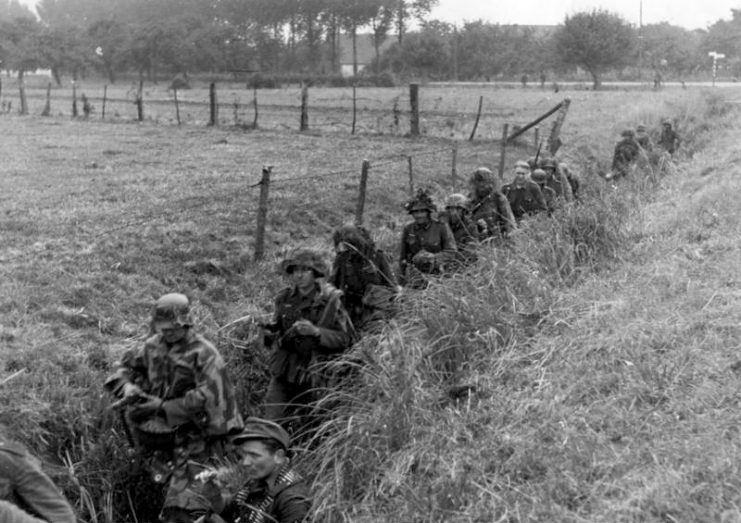
Air force
When it comes to aircraft, there is one mistake that is likely visible only to experts of WWII-era planes. During the scene when Allied airplanes were attacking German artillery positions, the movie makers used T-6 Texans, also known as Harvard aircraft. The thing is that these planes were used during the war only for training. From the way the Texans in the movie were painted, it is assumed that they are supposed to represent the famous P-47 Thunderbolts.
As for the Douglas C-47 Skytrains that carried the troops during the operation, the real ones were used in the movie. However, for some reason they were painted in awkward yellowish-brown color instead of olive drab.
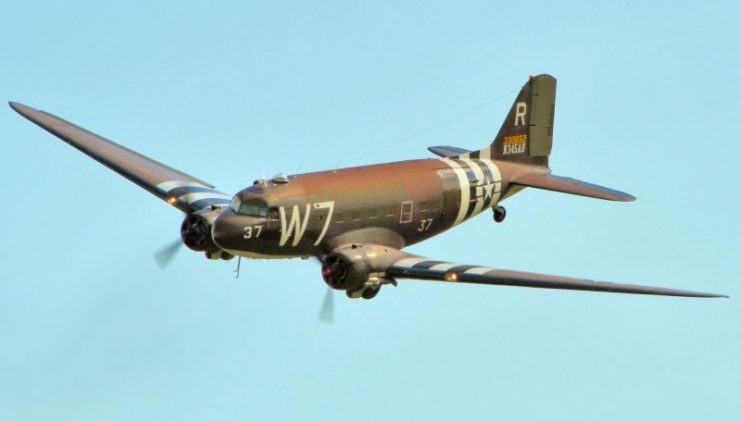
Armored units
During Operation Market Garden, Allied troops faced the mighty 2nd SS Panzer Corps armed with Panzerkampfwagen V Panther tanks. In the movie, even though one could be fooled easily, the Germans were using Leopard I tanks. Their production started in 1965, two decades after the operation.
Given that Leopards were based on Panthers, in the movie they were slightly modified by changing the turret and the cannon and by adding different skirts. However, the Leopards in the movie are recognizable by a distinctive exhaust grill at the back.
Some other tanks were also used to play the role of German vehicles. Namely, SS-Hauptsturmführer Grabner’s Sd.Kfz.251 is actually a modified British universal carrier. Also, the “German” tanks protecting the river bank are actually French AMX-105 self-propelled artillery.
German tanks in the movie also had mistakes in the colors used. The tanks are painted in light gray, which was never used by the Wehrmacht. Instead, a dark gray color was used until 1943. From that year, German tanks were painted in dark yellow with dark green and red brown colors.
Allied armor in the movie was represented with Sherman tanks, even though a few M47 Pattons can be seen. This was a post war tank that was introduced in 1951.
Small arms
As for small arms, these seemed not to be a problem to obtain. All soldiers in the movie are armed with proper weapons, except for some British paratroopers that had M1 Garands. The M1 was a standard American rifle and was not issued to British or Commonwealth troops. Only a small number of Canadian airborne troops had them. At some point of the movie, even German soldiers can be seen with this rifle.

Military facts and terms
Even though the movie is known for being one of the historically most accurate, there are still a few mistakes. If the mistakes regarding weapons and equipment were made for practical reasons, these historical faults should have been avoided.
The most obvious one is regarding the unit that was to be sent to Arnhem to fight Patton’s tanks. Feldmarshalls Rundstet and Model mention the 2nd SS Panzer Division as being under the command of Obergruppenfuhrer Wilhelm Bittrich. In reality, this was the 2nd Panzer Corps that consisted of the 9th and 10th Panzer Divisions. At the time, the 2nd Panzer Division “Das Reich” was nowhere near the scene.
Another obvious history gaffe was made by replacing Field Marshal Gerd Von Rundstedt with General Karl Student as the Commander of the Western Front. Student did participate in the operation, but only as the Commander of the 1st Paratroop Army.
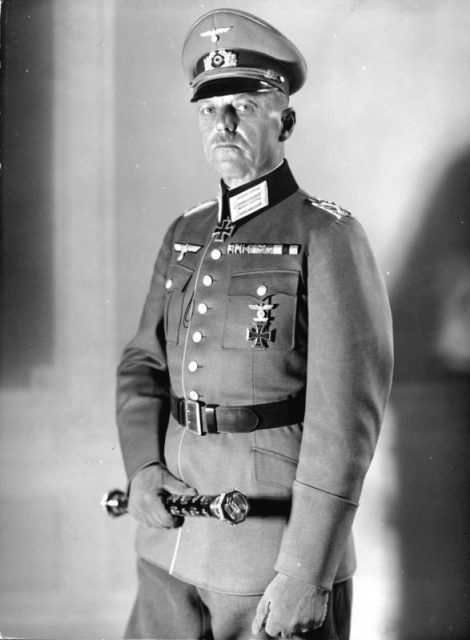
At some scenes, German ranks were used wrongly. In a scene when Ludwig is talking to his subordinate, he refers to him as Hauptmann or Captain. Hauptmann was an Army rank. In the SS his equivalent was Hauptsturmfuhrer. In the same manner, a subordinate calls him General instead of Brigadefuhrer which was an SS rank.
One of the stars, Gene Hackman, plays Polish Major General Stanislaw Sosabowski in the movie. However, through the entire movie he carries a rank stripe of a Brigadier General that has one less star.
Anachronisms
Quite similar to historical mistakes, there are some anachronisms in the movie. Some of them could be seen as inevitable, some of them were not.
Early in the movie, in the scene when generals are having a meeting, they have a map of Europe and Middle East from the Cold War era. One can notice a German-Polish border along the Oder River, Austria and Czechoslovakia as independent countries, and the West Bank and Gaza Strip occupied by Jordan and Egypt respectively.
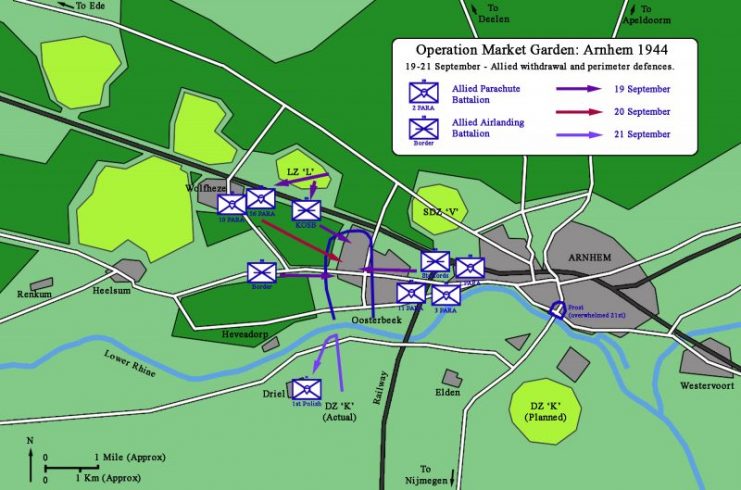
During the scene with the Allies arriving into Eindhoven, people that went out to greet them are carrying small American flags. Those flags have 50 stars, while the American flag of the period had 48 stars because Alaska and Hawaii at the time were not states.
Some mistakes movie makers couldn’t evade, such as rooftops full of TV antennas or the standing tower of the Saint Stevens church in Nijmegen, which was destroyed in February 1944 and restored in 1969.
Other mistakes
During the scene of the bridge explosion, the bomb was placed improperly for destroying the entire bridge. To do so, the bomb should have been placed under the base of the steel arch. In the movie the bomb was placed under the road surface, which would cause damage only to the road.
Another miscalculation was made in the scene when General Gavin lands by parachute. As he is landing there are several gliders on the ground. In reality, gliders landed only after all parachutists had landed and secured the landing area for the gliders.
To add to the list of general inaccuracies the Belgian town of Leopoldsburg was wrongly designated as Leopoldsville, which was the old name for Kinshasa, the capital of Belgian Congo.
Overall, A Bridge Too Far doesn’t have as many mistakes as some other war movies do. Certainly not enough to spoil the effect of one of the best World War II movies.
